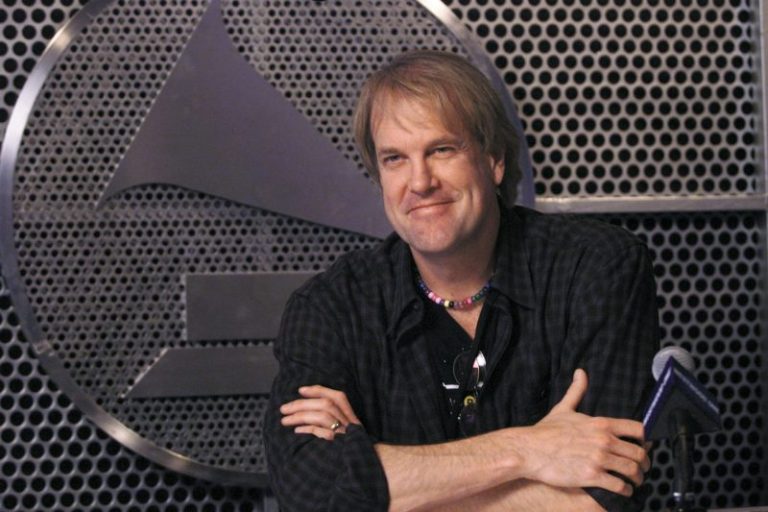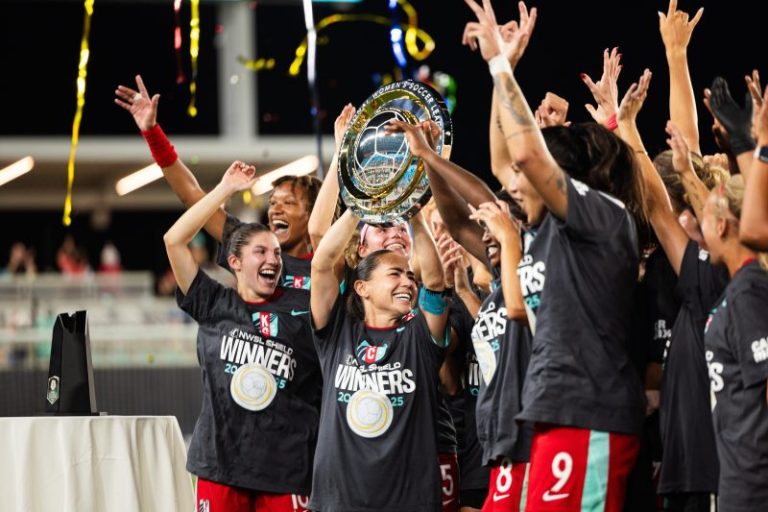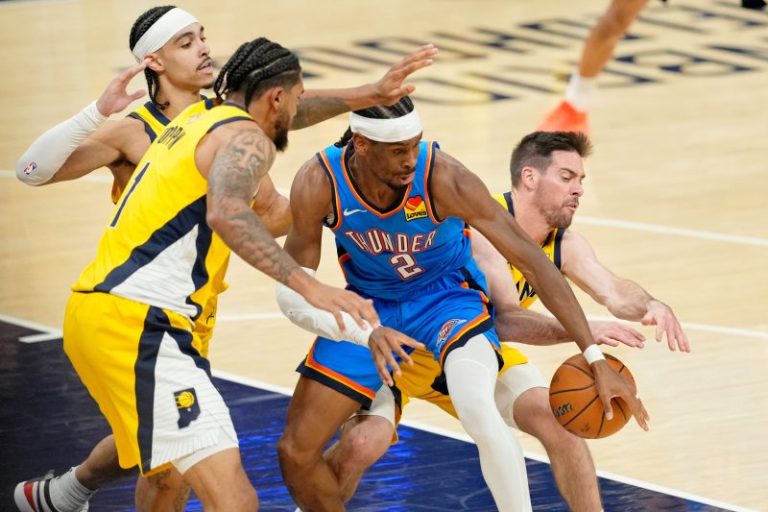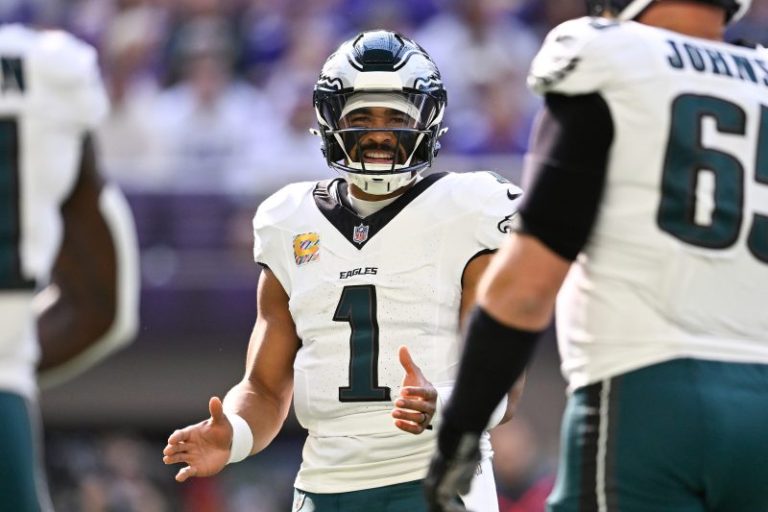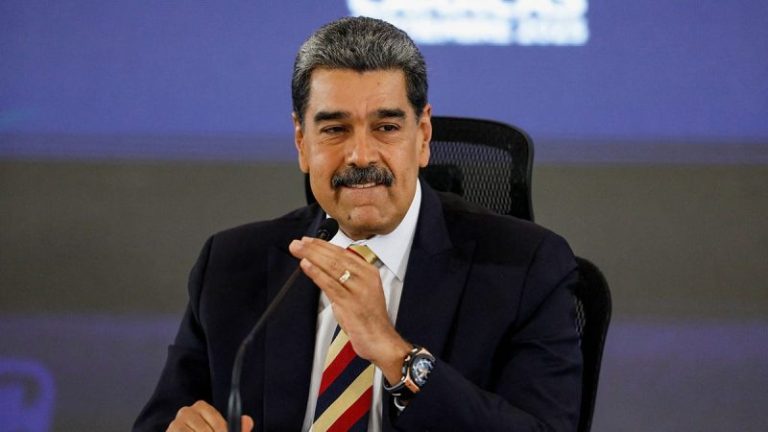For anyone who grew up in the 1990s and watched basketball, especially Michael Jordan and his Chicago Bulls teammates systematically dismantle the rest of the NBA on their way to six championships, the first 10 seconds of any game broadcast on NBC were usually accompanied by a recognizable narrative introduction, typically voiced by Bob Costas, Marv Albert or whomever was handling the play-by-play duties that game.
A distinctive sequence of the iconic NBC chimes, followed by a laser-like trace of the network’s Peacock, and then the pulsating beats of ‘Roundball Rock,’ which many consider to be one of the greatest sports themes of all time, got fans ready for two and a half hours of intense basketball drama.
‘Roundball Rock’ is, of course, the brainchild of six-time Emmy Award-winning and two-time Grammy-nominated musician John Tesh. When NBC Universal announced in July 2024 that it had re-acquired the rights to broadcast NBA games after a two-decade absence, the announcement evoked nostalgia for a time when pro basketball teams actually operated inside the 3-point line to achieve most of their scoring.
‘It’s tremendous, I am certainly a kid of the 90s, and that was such a big part of my sports viewership, and to have the NBA on NBC back, we couldn’t be more excited,’ said Rick Cordella, NBC Sports president. ‘There are not many times that you can get a new big property, and it’s probably the biggest acquisition we’ve had since the NFL in 2006.’
Cordella said one of the first calls he made after re-acquiring the NBA was to Tesh.
Tesh, for an older generation, is remembered as the co-host of ‘Entertainment Tonight,’ but music has played a significant role for the majority of his life.
Tesh wouldn’t call himself a diehard sports aficionado, although he played soccer and lacrosse at Garden City High School on New York’s Long Island and walked on both teams at North Carolina State.
‘I’ve always been a sports fan, but I’m the kind of fan that sports fans hate,’ Tesh told USA TODAY Sports. ‘So, I show up for the playoffs.’
Tesh often shares the story of how ‘Roundball Rock’ was created: He entered the sports theme business in 1982 after CBS in New York asked him to write a song for the Tour de France while covering the event for the network. In 1990, after 18 years, CBS lost the NBA television rights to NBC, having significantly outbid them. The landscape of professional basketball suddenly shifted, as the Magic Johnson and Larry Bird era, which had been mainly responsible for bringing the league out of its tape-delayed, drug-fueled past, transformed into an Air Jordan-focused, money-making showcase.
There was only one problem: NBC needed a theme song for its new basketball package. And it knew just who to ask.
Tesh was in his hotel room in Megève, France, covering the world’s premier cycling race, and suddenly woke up at 2 a.m. A theme popped into his head, and he figured if he didn’t find a way to jot down the idea, he would go back to sleep and lose it forever.
So, he did what anyone would probably do in his situation, especially when technology wasn’t as prevalent as it is today: He called his answering machine back home and left a message, with his voice articulating the theme.
Once he returned home to the United States and listened to the message, Tesh got right to work, even bringing in friends who were orchestra players to play on the theme.
‘I figured out the chords, figured out what it was, wrote a middle section, and then brought my band in and said, ‘Hey, let’s play this.”
But giving it a second listen, he and NBC agreed that the theme sounded a little ‘slow.’
The finished product finally came alive when Tesh inserted a Betamax tape of highlights featuring Magic and Jordan, setting the tempo to what a fast break might entail. Spending his own money to bring in a small orchestra also helped, and the beats per minute were cranked up to 132.
‘Understanding that the theme not only needs to be catchy, with six or eight notes, but it needs those sections, where Marv can plug in and start talking,’ he said. ‘So, it can’t be bombastic all the way through. It has to be in, what they call in music, a handoff. So yes, the brass comes in and just blasting away, and then you come back with the strings, then maybe it’s a funk section where the bass guitar comes in.’
Two weeks after submitting the fully formed theme, Tesh got a ‘yes’ from NBC.
‘It’s hard to imagine the NBA on NBC without that song,’ Cordella said. ‘That song was part and parcel of our coverage, and it still resonates today.’ The network is also bringing back Jim Fagan, who Cordella says is the ‘Voice of God.’ Fagan, who died in 2017, was an integral part of the pre-game segments, and his narration will continue through the use of artificial intelligence.
NBC Universal is paying a reported $2.5 billion annually to broadcast the NBA after a 23-year hiatus, and ‘Roundball Rock’ will be heavily featured. Grammy-winning musician Lenny Kravitz will perform the opening theme for ‘Sunday Night Basketball’ when it premieres on Feb. 1.
Fox used it for its basketball coverage, much to the chagrin of the ‘get off my lawn’ social media crowd. But NBC brought it back for special occasions, such as the basketball tournament in the Summer Olympics, and even broke it out during a 2017 ‘Sunday Night Football’ telecast, following a basketball-themed touchdown celebration by Atlanta Falcons running back Devonta Freeman.
When Tesh decided to do an updated version of ‘Roundball Rock,’ that same cynical crowd let him have it when he played it on a podcast to get an initial response.
Now 73 years old, Tesh says he often reflects on his legacy. He has re-entered the music scene with the release of ‘Sports’ in September, a 13-track instrumental album – his first original work in more than 20 years – which features a new reimagined ‘shredded’ version of ‘Roundball Rock.’
‘And because there’s YouTube and because there’s Facebook and all the rest of that stuff there, whether it’s your testimony or it’s a piece of music, you can actually have that kind of legacy. And so, I do think about that every day,’ he said.
These days, it’s more than music that gets Tesh up in the morning, considering more than a decade ago, doctors gave him 18 months to live following a prostate cancer diagnosis. But it was the encouragement of his wife, actress Connie Sellecca, to power through despite the grim news and dig deep into his faith.
Tesh also says that it helps that he, without fail, watches ‘Gladiator’ at least once a week and has an affinity for any movie with submarines in them.
‘She said, ‘We’re gonna fight back with this.’ And so I started, and we did. And with medicine and also with the word of God,’ Tesh said. ‘But I was always looking for songs that I could exercise to keep my body still in shape while I was going through chemo and the rest of that. And I kept landing on the Rocky 4 theme (Survivor’s ‘Burning Heart’), so when I went back into the studio to record new music, I thought, you know what? That’s my baseline.’
Whether it’s that Rocky 4 theme, the baseline for his life, or the bassline to ‘Roundball Rock’ rattling through the television for the next decade, Tesh’s musical legacy is all but secured.
‘When you get to a certain age, I’m not sure if this is for everybody, you realize, it’s not going to last forever. I definitely think about it and I think about leaving music behind,’ he said.

